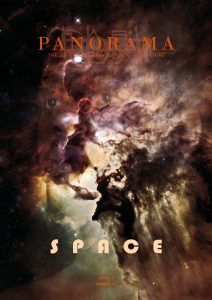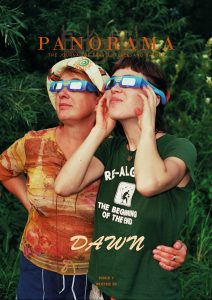Of our country’s 7,461 islands, only 2,000 are inhabited and about 5,000 are yet to be named. But the population of the Philippines today, by some estimates running up to 110 million, presents a staggeringly confusing picture of where exactly we are on the map.
And not just our map. There are an estimated 2.3 million Filipinos living outside the Philippines—a great diaspora composed of the exceptionally gifted, the decadent and dissatisfied, the incredibly capable and hardworking, the overqualified and underpaid, with many of this vast number unclassified and undocumented—a country in itself, replete with deep divisions of class and political outlook, a large percent of the population responsible for a major portion of our nation’s upkeep, and for the way the world sees us and recognizes us. It’s no exaggeration to say anyone around the world outside the confines of our archipelago will know a Filipino—whether that Filipino is their boss, their colleague, co-student, caregiver, or domestic helper, or the guy belting out that note-for-note Bon Jovi cover at their local bar night in, night out.
I should know; I’ve been and seen a little bit of everything. When I fronted a band back for a brief spell after college we were offered a stint in Japan as entertainers after we’d played a particularly spirited version of Radiohead’s “Creep.” I’ve been on sponsored residencies and fellowships as a writer on one’s own, representing one’s own, in places such as Lasswade, Iowa, and Seoul. I’ve broken bread with engineers and contract laborers in Riyadh, and I’ve sat and watched Filipino TV with housekeepers and nannies in maids’ quarters in Jeddah. I’ve represented myself as a business owner and an employee in Guangzhou, Singapore, and Kuala Lumpur. I’ve sailed on press junkets on massive cruise ships staffed with hundreds of fellow Pinoys, from the captain’s deck to the galley.
And everywhere I went, there he or she was: the Filipino, across, beside, or behind me, sitting in a bus seat or behind the counter, drinking a cocktail or sweeping the floor, cocking an ear or throwing a glance just so, enough to tell me they immediately felt it and recognized it, whatever that was, and they immediately knew. I would throw them a smile and a single word, as if it were code: “Kabayan”—countryman, countrywoman—and they would throw back a look of welcome and a quick question: was I a tourist? If I wasn’t, how long had I been away from home? And then, if I picked up on the conversation, where was home in the Philippines? This meant: which province and which town, exactly?
This must especially matter to one coming from a nation of islands. Yes, we are of the same country, but which people of that country? What’s your landscape like, which mountain do you see, and which side of your town faces the sea? Who is your congressman? Who is your mayor? To which political dynasty do they belong?
As a writer who was born on the island of Cebu in the central region of the Philippine archipelago, with roots in Davao, the largest city in the main southern island of Mindanao, and raised and educated in Manila in the northern island of Luzon, I sometimes find that I can identify strongly with any one of the three, depending on what I am hearing, speaking or writing about: Cebuano, my first language, or Davao City, where most of my family ties lie, or Manila, the place in which much of my life and work takes place.
Like most capital cities, Manila, for all its diversity and chaos, is certainly not the Philippines. It is neither any single place, either: class and politics have divided us and drawn and quartered us.
Many of us, myself included, find ourselves no longer at home; those who can, take refuge in going away, for days or weeks at a time, and those who can’t, take refuge in the silent, inner joy of close friends and family, the only inhabitable things in a mostly uninhabitable city, accepting the worst and hoping for the best. I think this is what I recognize, too, in my fellow Filipinos in many of my encounters across the world—in their eyes and in their tone of voice, in their sunglasses and their suits, their leather jackets and their designer sneakers, in the pride they place in their first-world jobs and the pride their jobs have given them in return.
Because what is there back home? What is here, in Manila, or in any of our cities or on our islands? We are aware of the provinces and the places we come from, but we are not so aware that we are a single people with a particular history and a singular struggle.
Nor should we be, perhaps. So whenever I encounter a fellow Filipino, at home or abroad, it takes a while for me to situate ourselves and to find a certain and common footing. It sometimes takes a step across a distance that is almost unsurmountable—they support a President whose every move I can’t support; I represent a socio-economic class they will never be comfortable with, and with good reason; or vice-versa. But the sighs and the leaps in the blood come: for the weather we’re used to, for the food and the fiestas we love, and even for the aches we startlingly have in common: the continuous struggle of life back home, and, despite it all, the continuous yearning to return. To where? To wherever we’re from: Tacloban, Bacolod, Tuguegarao, Maguindanao, Sulu, Palawan.
So to write about “war” or “peace” in our country depends largely on where one comes from, or where one is at the moment. There is, more or less officially, a drug war going on in our country, but in the metropolitan high-rises in high-bandwidth, high-end Bonifacio Global City and the luxury enclaves of Forbes Park and Dasmariñas Village, it exists as a news item, a procession of unspeakable acts on TV screens and social media feeds. There are places that have very recently been reduced to near-rubble by actual military conflict, but there are shores very near them that harbor world-class beach resorts and forest sanctuaries.
“…in some places, the sound of celebration is the same as the sound of fear,” Och Gonzalez writes in her essay “Bleeding Heart,” and I’m inclined to listen to my country with the same kind of ear, as though I could one day be accustomed to imagining these different places, places of conflict, places of peace, as one place, as one country. “Temperance. Cultivation. Culture. Regret and remorse. Reconstruction.” Joel M. Toledo delivers these ideas in single file in his poem “Alpha,” as though we could all one day see these chaotic abstractions as part of a single, directed act of creation—perhaps the creation of that single nation we wish to be understood as, to be named as, and to be spoken of.
One day, maybe. Because I like to think of our country as a young country, barely named and not yet fully formed. I like to think of our country as one nation, despite the fact that it is often at war with itself and yet, somehow, at peace with the idea of itself at the same time, with all its uncountable worries considered, its quiet joys carefully counted, and all of its islands, named and unnamed, spoken for.











